In storytelling, perspective is everything. Who the author of the piece aligns the audience with can make all the difference in the world in how the audience interprets said piece. Because inevitably, the audience is going to find themselves relating to the characters whose perspectives they are seeing the story from.
On May 14, 1998, audiences across the nation cried foul as the final episode of Seinfeld premiered to decidedly mixed responses. Over the course of its nine-year run, Seinfeld became one of the most successful television programs of the nineties, with the core foursome of Jerry, George, Elaine, and Kramer all becoming popular cultural staples in their own right. Throughout the series, the ‘show about nothing’ constantly showed audiences the misadventures of the foursome from their own perspective. But in the finale, Jerry Seinfeld and co-writer Larry David foregrounded an element of the subtext that had always been a crucial element of the show, elevating it to full-on text in the process; these characters were all awful people.
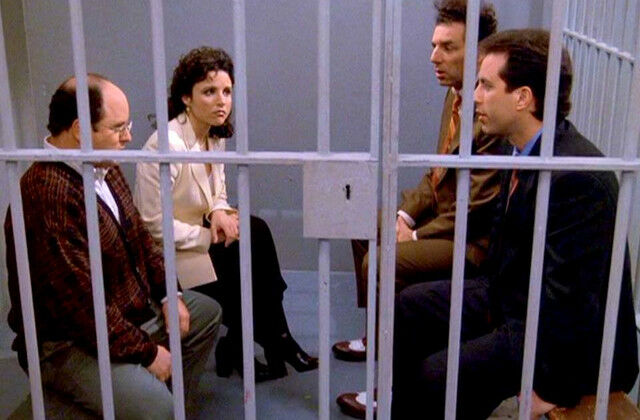
The foursome had spent the entirety of the show laughing at the misery and misfortune of others and in the final episode, it all comes back to haunt them. All of the characters they have troubled over the years testify against them in court, leading to the series ending with Jerry, George, Elaine, and Kramer all locked up together in the same jail cell. No longer were they metaphorically doomed to an unending cycle of nothingness, it was now quite literal, with Seinfeld and David even going so far as to have the final lines of the show being Jerry and George having the same conversation they began the very first episode having.
Needless to say, audiences who had fallen in love with these characters did not take kindly to all of this. Some felt it was unfunny, some felt it was unfitting, and some felt flat out betrayed.
Which brings us to Ari Aster’s Midsommar.
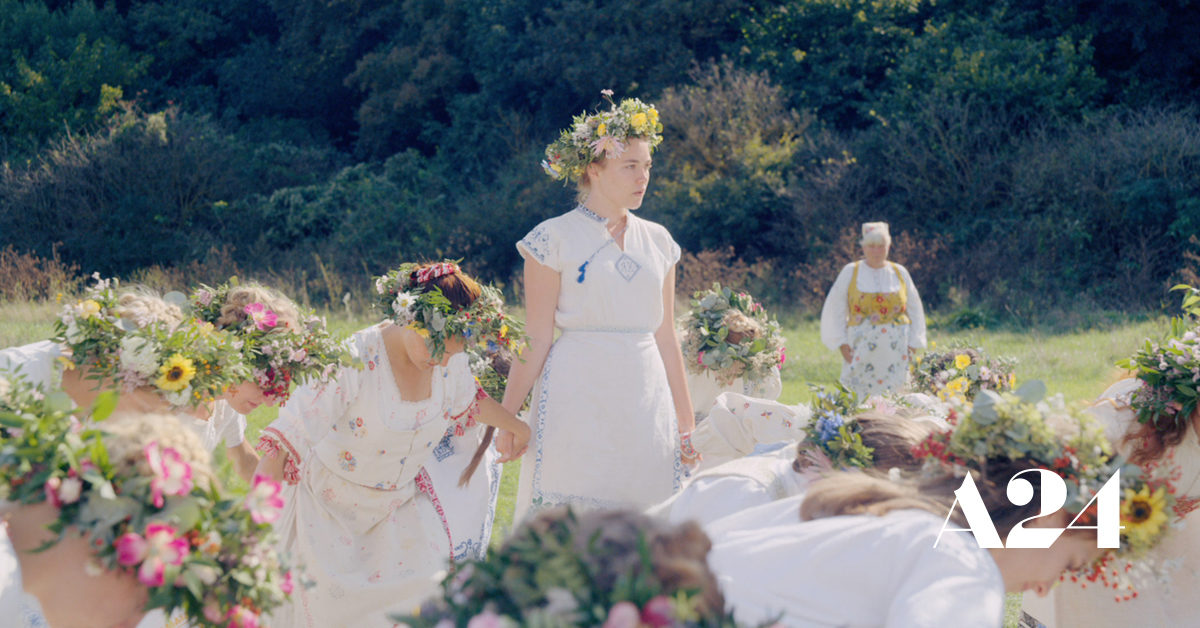
Aster’s sophomore film sees him following up last summer’s Hereditary with yet another stellar horror film rooted in trauma and grief, this time with a film far more overtly indebted to the subgenre of folk horror. Popular examples of films that have thrived within this subgenre before include the likes of The Wicker Man, The Blood on Satan’s Claw, or even the more recent Apostle. It is a subgenre characterized by a fairly standard plot structure: a group of people travel to a foreign idyllic land, witnessing and partaking in the foreign and often surprising customs of the people of this new land, and the setting and its people are eventually revealed to be a great deal more monstrous or malevolent than initially thought.
And while one might certainly think that that this is essentially the gist of Midsommar as well from the trailers and advertising, the film itself actually sees Aster weaponizing the subgenre’s traditional mechanics and using it to his own gain. In Midsommar, it isn’t the people of the foreign land that are the monsters; it’s us.
We experience the story solely through the eyes of the Americans who are embarking on this trip to foreign land: Dani, Christian, Josh, and Mark. They are venturing to Sweden for a trip, guided along by their mutual friend, Pelle. In short, Pelle takes them all to Sweden where they are killed off, one by one, by the inhabitants of the Swedish commune before Dani ultimately joins them, making the choice to murder her boyfriend Christian in the finale. On paper, it reads like a pretty straight forward folk horror narrative, right? Deceptively so.
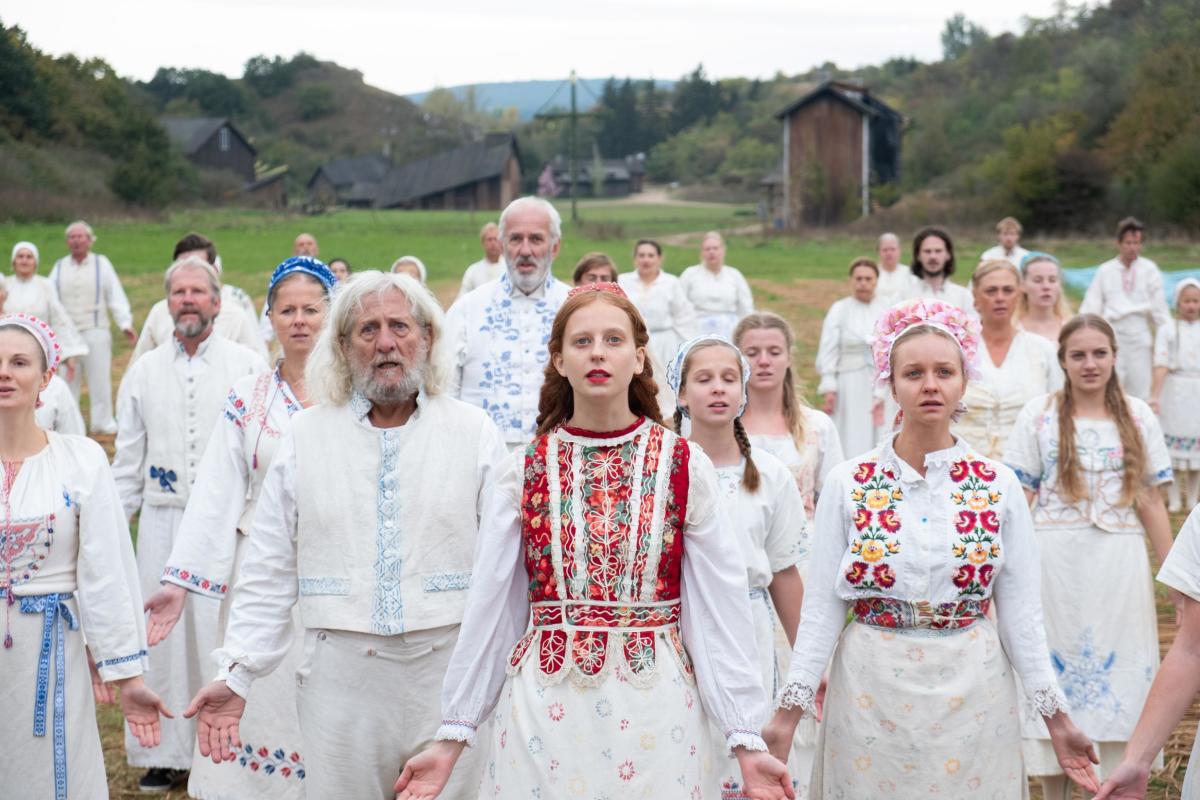
From the opening frame of the film, Aster spends the entire amount of time allotted to the American-set portion of the story absolutely visually suffocating us. The landscape is barren, covered in snow, and utterly claustrophobic. Aster and cinematographer Pawel Pogorzelski’s visual language in these first fifteen minutes becomes characterized by garish close-ups of bright screens (phones, laptops, etc.), deep dark shades of blacks and blues, and the use of mirrors as a visual motif.
Contrast this to the way Pelle’s commune is visually captured for the remainder of the film’s runtime in wide frames, long takes, and near-constant glaring sunlight. Once the characters arrive in Sweden, they are literally freed from the confines of their American environment. Not only are the walls of the frame itself wider, giving them room to breathe and move in ways that would have been completely unthinkable in the film’s opening section, but they are also quite literally freed from technology and civilization. None of their phones work in Sweden and there isn’t a straight-edged building in sight. Whereas the shots of Dani’s parents’ home in America were characterized by homogenous, near-identical gray houses, the structures at Pelle’s commune are all purposefully misshapen, evoking the provocative converging lines of the German expressionistic film movement.
This thread of emphasizing the differences between the two settings through design is carried even further in the characters’ clothing choices. Everyone at the commune is wearing various versions of immaculately stylized gowns or robes, all with elaborate floral patterns upon them, not dissimilar to the art they decorate their walls with. Here, each individual is one with the environment and its art. Contrast this to the Americans, all of whom spend the entirety of the film wearing distinctly plain and colorless t-shirts. The Americans are undefined, blobs of dull color which are about as far from being one with the environment as aesthetically possible.

Crucially, once Dani starts to actually interact with the people of the commune and partake in the festivities, she is given an apron that shares the same design qualities as the traditional ‘pageantry’. She is becoming one of them and becoming a part of the beauty of the land. In fact, over the course of the rest of the film, one can follow Dani’s ascending arc solely through her wardrobe changes. This leads all the way up to the finale, in which she is covered in floral arrangements from head-to-toe.
All of this to say, the formal language of the film is constantly reinforcing these same ideas over and over again; that the Swedish commune is synonymous with beauty while the American setting is synonymous with the exact opposite. Of course, the characterization of the American characters only takes this further. Mark is consistently disrespectful of the commune’s culture and activities, to the point of unwittingly peeing on the ancestral tree that houses the ashes of all of their departed. Josh is far more kind to the natives but deliberately disobeys their one hard-and-fast rule, taking pictures in their sanctuary and disrespecting their beliefs.

They both meet grisly ends at the hands of members of the commune as a direct result of their obtrusively selfish behavior towards the natives. Mark’s ignorance is played for laughs for most of the film, and it is ultimately his downfall. His unwillingness to even attempt to pay attention to the commune’s traditions leads him directly to his own death. Josh, meanwhile, is unable to part with his American identity. He brings the technology of civilization into the commune’s most sacred space, a literal clashing of the American and Swedish ideals the film presents, and pays the price for doing so.
Then, of course, there’s Christian. But to talk about Christian without addressing Dani, first and foremost, is to miss the entire point. Because Dani’s entire arc is thoroughly rooted in this very idea; that the Americans are the monsters here. The inciting incident of the film is Dani finding out that her parents and sister have all been literally smothered to death by civilization, her sister having funneled the exhaust fumes of her car directly into their house to commit a murder-suicide. Throughout the American segment of the film, Dani and Christian are constantly framed in mirrors, the film’s form forcing them to reflect upon themselves and, subconsciously, forcing the audience to reflect inward as well. This visual motif plants the seed of the idea that the film is looking for audiences to perhaps look inward rather than outward. From here, when Dani and co. arrive in Sweden, Aster immediately shows us just how warped their perspective (and subsequently, ours) is, with the camera quite literally turning upside down as they enter the commune.
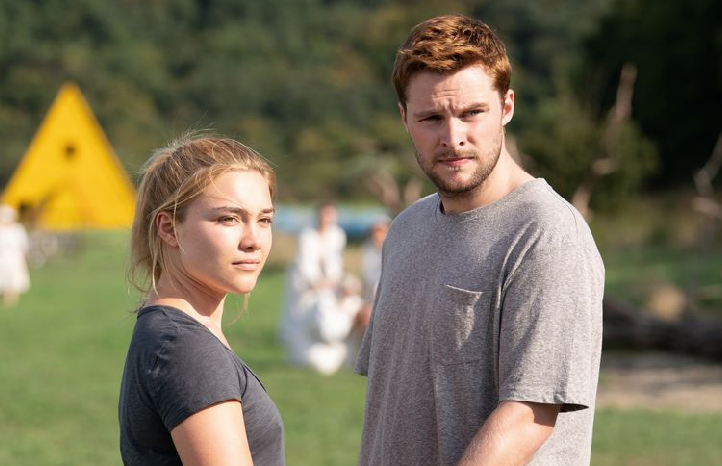
Christian and Dani’s relationship is blatantly toxic from the get-go, but as they spend more time in the commune, a more overt form of pressure is applied to it. Dani may views Christian as something of a crutch for her to lean on but in pretty much every way, he’s a chain. As Christian demonstrates time and time again, he is unable to provide the kind of support Dani needs, instead basically acting as a constant reminder of the trauma instead. It isn’t until Dani begins to truly join in the festivities of the commune that she truly finds support. The members of the commune do not feel burdened by Dani’s need for support, they do not condescend to her or make her feel unwanted. They don’t even really say anything, they simply experience the grief with her and that makes all the difference.
Notably, Pelle actually attempts to share a moment like this with Dani before they leave America, but Dani is resistant. In no small part thanks to the distinctly American ideas she is surrounded by, Dani cannot yet accept this kind of raw, invested support. As she moves further into the commune’s hierarchy, becoming their May Queen and partaking in their most exclusive festivities, she moves further away from Christian and the American ideals that have constituted this detrimental relationship.
In the film’s final moments, Dani is given the choice to either sacrifice Christian or one of the commune’s own as part of the midsummer ritual. In essence, she is asked to choose between the America she left and the Sweden she has found. Ultimately, she chooses Sweden, sacrificing Christian and severing her last connection to America, the birthplace of her trauma.
As Christian and the rest of the American characters other than Dani are sacrificed in the burning temple, they are turned into pieces of the idyllic beauty. They are burned to ashes, just as the elders of the commune are when they come of age, and spread amongst the fields to liven the crops. The film’s final image, of the burning temple being layered over Dani’s smiling face, is an incredibly powerful one. With the last act, she is well and truly free and she finds herself surrounded by people who truly care about her.
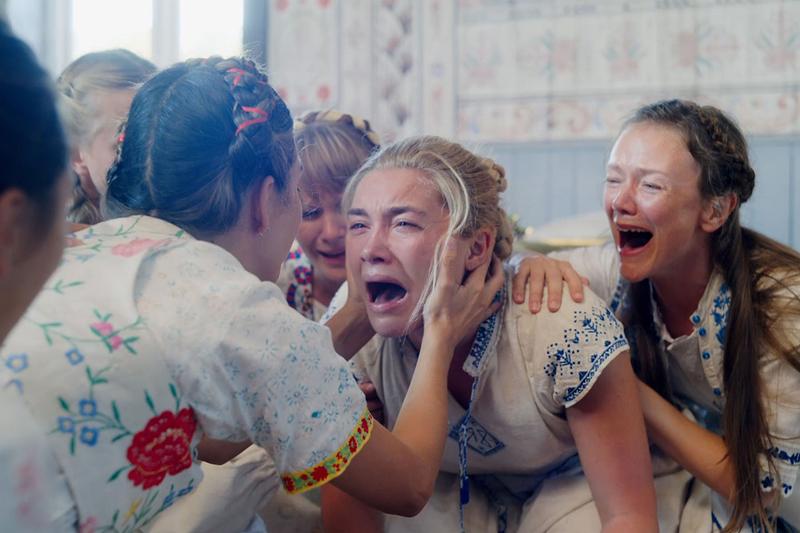
In tackling the subgenre of folk horror and utilizing its tropes to craft a brand new message, Aster is able to deliver a film that feels vitally relevant in today’s world. The villains of Midsommar are not the natives, but rather the Americans that travel to their land in the first place. We just don’t realize it at first because we are seeing the story through the eyes of the Americans. As Aster has reiterated constantly in interviews surrounding the film, he sees it as his “breakup movie”. Only Dani isn’t just breaking up with Christian, she’s breaking up with the entire American condition.